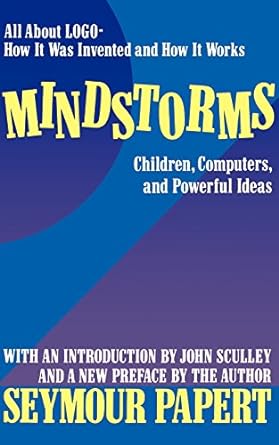
Enjoy fast, free delivery, exclusive deals, and award-winning movies & TV shows with Prime
Try Prime
and start saving today with fast, free delivery
Amazon Prime includes:
Fast, FREE Delivery is available to Prime members. To join, select "Try Amazon Prime and start saving today with Fast, FREE Delivery" below the Add to Cart button.
Amazon Prime members enjoy:- Cardmembers earn 5% Back at Amazon.com with a Prime Credit Card.
- Unlimited Free Two-Day Delivery
- Streaming of thousands of movies and TV shows with limited ads on Prime Video.
- A Kindle book to borrow for free each month - with no due dates
- Listen to over 2 million songs and hundreds of playlists
- Unlimited photo storage with anywhere access
Important: Your credit card will NOT be charged when you start your free trial or if you cancel during the trial period. If you're happy with Amazon Prime, do nothing. At the end of the free trial, your membership will automatically upgrade to a monthly membership.
Buy new:
-25% $14.91$14.91
Ships from: Amazon Sold by: Prime Deals, USA
Save with Used - Good
$9.97$9.97
Ships from: Amazon Sold by: Zoom Books Company

Download the free Kindle app and start reading Kindle books instantly on your smartphone, tablet, or computer - no Kindle device required.
Read instantly on your browser with Kindle for Web.
Using your mobile phone camera - scan the code below and download the Kindle app.

Mindstorms: Children, Computers, And Powerful Ideas Paperback – August 4, 1993
There is a newer edition of this item:
Purchase options and add-ons
Computers have completely changed the way we teach children. We have Mindstorms to thank for that. In this book, pioneering computer scientist Seymour Papert uses the invention of LOGO, the first child-friendly programming language, to make the case for the value of teaching children with computers. Papert argues that children are more than capable of mastering computers, and that teaching computational processes like de-bugging in the classroom can change the way we learn everything else. He also shows that schools saturated with technology can actually improve socialization and interaction among students and between students and teachers.
Technology changes every day, but the basic ways that computers can help us learn remain. For thousands of teachers and parents who have sought creative ways to help children learn with computers, Mindstorms is their bible.
- Print length252 pages
- LanguageEnglish
- PublisherBasic Books
- Publication dateAugust 4, 1993
- Dimensions5.25 x 0.88 x 8.25 inches
- ISBN-100465046746
- ISBN-13978-0465046744
- Lexile measure1230L
Discover the latest buzz-worthy books, from mysteries and romance to humor and nonfiction. Explore more
Frequently bought together

Customers who viewed this item also viewed
Editorial Reviews
Review
"Seymour Papert is the greatest of all living education theorists. He puts into the hands of the child new conceptual tools and thus changes the learning experience from a matter of discipline and suffering into one of excitement."―Marvin Minsky
"Ever since I met Seymour...I liked the way he talked about kids and how they learn. What he taught me was that each of us can learn and that computers are a unique tool to be used in our learning. But real learning is not rote and not commanded, but the result of exploration and delight."
―Governor Jerry Brown
"Papert's fascinating volume should help adults allay their own fear of computers and not extend those fears into the uncorrupted psyches of children."
―Choice
About the Author
Mitchel Resnick is Lego Papert Professor of Learning Research, Director of the Okawa Center, and Director of the Lifelong Kindergarten group at the Massachusetts Institute of Technology (MIT) Media Lab. A former student of Papert's, Resnick developed Scratch, a programming language designed to help children learn coding, and his project Programmable Bricks served as the foundation for LEGO Mindstorms. He is the recipient of the Harold W. McGraw Jr. Prize in Education. Resnick is also the author of Lifelong Kindergarten.
Product details
- Publisher : Basic Books; 2nd Revised ed. edition (August 4, 1993)
- Language : English
- Paperback : 252 pages
- ISBN-10 : 0465046746
- ISBN-13 : 978-0465046744
- Lexile measure : 1230L
- Item Weight : 6.4 ounces
- Dimensions : 5.25 x 0.88 x 8.25 inches
- Best Sellers Rank: #1,587,896 in Books (See Top 100 in Books)
- #954 in Mathematics History
- #987 in Educator Biographies
- #3,023 in Scientist Biographies
- Customer Reviews:
About the author

Discover more of the author’s books, see similar authors, read book recommendations and more.
Customer reviews
Customer Reviews, including Product Star Ratings help customers to learn more about the product and decide whether it is the right product for them.
To calculate the overall star rating and percentage breakdown by star, we don’t use a simple average. Instead, our system considers things like how recent a review is and if the reviewer bought the item on Amazon. It also analyzed reviews to verify trustworthiness.
Learn more how customers reviews work on AmazonTop reviews from the United States
There was a problem filtering reviews right now. Please try again later.
- Reviewed in the United States on November 2, 2024My friends recommended that I read this book to gain insight into how children learn from technology and the powerful ideas that underlie the modern digital world, including computational thinking, programming, and coding. I believe this book provides valuable answers, especially since Seymour Papert is a renowned figure in the field of constructionism. It certainly deserves to be read
- Reviewed in the United States on July 19, 2011Papert was a pioneer in the field of instructional technology. Papert highlights two main constructs - one that children can learn to use technology in meaningful ways; and two, the ability to use technology as a part of the learning process effects the way future learning will take place.
Papert took aspects from the Piagetian theoretical framework to support his learning philosophy. Specifically, Papert believed that children are the builders of their own intellectual structures. In other words, children use the tools around them to learn and build their intellect. Papert's theoretical framework differed slightly from Piaget's in that he highlighted the differences in the "tools" with which children use by noting the importance of the culture surrounding those tools and the learning environment it provides. Instead of attributing slower development to complexity, as Piaget would have done, Papert believes that the culture from which the learner operates in should also be considered as a factor of development.
Papert regarded teaching and learning in traditional classrooms of his time as inefficient, forced and sometimes even painful, and believed that instructional technology would transform classrooms as well as informal learning environments to more intuitive and nurturing environments. Papert certainly did not assert that instructional technology was a "magic wand" so to speak, but rather a tool that may enable a different path to success, or even an initial one! With a background in mathematics, Papert was well-aware of what he described as "mathaphobia," or the inclination of students to dislike math or believe they could not succeed in math. In an effort to combat learning obstacles like "mathaphobia," Papert created a scheme of optimal learning which would include the following components: tools for learning are integrated into the learner's "natural landscape." In other words, the learner should be able to experiment with the learning tools and relate to them in an intuitive manner. Additionally, the learning tools should be modeled by knowledgeable others, so the learner can relate to them in collaborative experiences. Papert also considered "body knowledge" to be an essential part of the learning process; learners should be able to use their kinetic intelligences on a regular basis during the learning process. The final component of optimal learning, according to Papert, is the ability to relate the new information to existing knowledge in a meaningful way.
Papert used "computer-controlled cybernetic animals" or robots to explore the technology integrated learning process and optimal learning environments. Using robots and the LOGO computer language, Papert created learning tools and experiences for children and found great success when providing a free contact between the learners and their tools.
Papert openly admits that he is a bit of a utopian thinker, and he writes as such, but his theories do resonate with instructional technologists, and educators overall. Educators, including myself, have seen that technology integrated learning environments can provide rich learning opportunities and Papert's Mindstorms is a great look at where technology integration started and also provides a multifaceted lens from which to critically examine where we are going in the future. I highly recommend!
- Reviewed in the United States on September 6, 2017This is a classic work on constructivism and micro learning worlds.
- Reviewed in the United States on May 19, 2000This is the best book I have ever read on how to assist people to learn for themselves. Papert began his work by collaborating with Jean Piaget, and then applied those perspectives in a self-programming language designed to help children learn math and physics.
Papert explains Piaget's work and provides case studies of how the programming language, LOGO, can help. He provides a wonderful contrasting explanation of the weaknesses of how math and physics are usually taught in schools.
I learned quite a few things from this that I did not know before. People are very good at developing theories about why things work the way they do. I knew that these theories are almost always wrong. What I did not realize is that if you give the person a way to test their theory, the person will keep devising new theories until they hit on one that works. What is usually missing in education is the means to allow that testing to occur.
An especially imaginative part of this book were the discussions of how to create theory testing solutions that are much simpler and easier to apply than any school problem you ever saw in these subjects. Papert works from a very fundamental and deep understanding of math and physics to reach the heart of the most useful thought processes for applying these subjects. It is thrilling to read about what you have known for many years, and to suddenly see it in a totally different and improved perspective.
Another benefit I got from this book were plenty of ideas for how to help my teenage daughter with her math. She is very verbal, and Papert points out that math seldom teaches a vocabulary for talking about math. As a result, she memorizes a lot and gets dissociated from the subject. I got a lot of ideas for how to encourage her to personalize the concepts and problems by moving her own body. From that I realized that I often solve the same kinds of problems by recalling physical situations I have been in. But I have failed to help her make that connection because I was unaware of it on a conscious level.
If you want to improve as a learner, help others learn better and faster, or simply want to understand more about different ways to think, this is a great book. I hope that all teachers get a chance to read and apply it.
Enjoy learning more!
- Reviewed in the United States on April 10, 2024Seymour Papert was working on this in the 70s and early 80s, but the way he discusses learning and the ways technology interact with it is still relevant today. The specific technologies he was working with aren't in use as much today, but the way he describes using them is still important with more modern tools.
His warnings of how computers can be used poorly in education should still be heeded, and the constructionist philosophies are still powerful tools for helping children develop understanding of the world.
I recommend it for anyone who is interested in education.
- Reviewed in the United States on March 21, 2014To be honest I am a bit disappointed. There are some interesting ideas in it, but not as powerful as it claims.
Top reviews from other countries
-
 Gilvan VilarimReviewed in Brazil on April 7, 2023
Gilvan VilarimReviewed in Brazil on April 7, 20235.0 out of 5 stars Clássico de Papert
Um livro essencial na área de informática e educação. Creio que já teve uma tradução mas não se encontra mais. Esse é o original em inglês. Ainda tem discussões muito atuais, apesar da época do lançamento.
-
 Guy MontpetitReviewed in Canada on September 7, 2020
Guy MontpetitReviewed in Canada on September 7, 20205.0 out of 5 stars One of the intellectual giants
Tour de force
 Saurabh JainReviewed in India on September 1, 2017
Saurabh JainReviewed in India on September 1, 20174.0 out of 5 stars Four Stars
Book's content is good but the publisher has printed the text very small
-
 masagaReviewed in Japan on November 4, 2016
masagaReviewed in Japan on November 4, 20162.0 out of 5 stars 期待と少し異なる内容構成
他メディアでの書評により本書を選んだのだが、コンピューターと接する子供の心理等に関するより一般的な記述を期待していたのに対して、"Logo"開発の経緯が中心の内容であったため、期待と少し異なる印象。
 R. CourtReviewed in the United Kingdom on April 26, 2010
R. CourtReviewed in the United Kingdom on April 26, 20105.0 out of 5 stars To little too late, but a fine effort
This book is about the need to have children programming computers, not computers programming children.
It is a failure, because it was written in the 1980s, and now computers train children, and children almost never learn to program computers.
Everybody should read this, parents particularly, and teachers more than parents.
This book describes the Logo programming environment as it was in the 1980s. Computing has moved on, and there isn't much of Logo left these days.
Computer programming to a deep level could never have been easy, but I'm not sure whether it has become more difficult than it absolutely needed to be.














